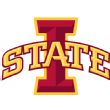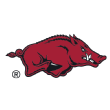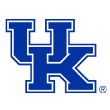The March Madness pain index: Whose men’s 2022 NCAA tournament losses hurt the worst?
The support group for 66 fan bases has returned.
The Duke Blue Devils and Villanova Wildcats were the latest to join the March Madness list that will ultimately include every team but one, the group of NCAA tournament teams destined to end otherwise fine seasons with a loss. Either the Kansas Jayhawks or North Carolina Tar Heels will join this list Monday night, and the feeling is not destined to be pleasant.
Every team’s exit from the tournament has its own distinctive story, but some are undoubtedly tougher to swallow than others, so we sought to quantify the disappointment. Here are the main factors we considered in measuring the March Madness pain:
Did your team squander a game it looked like it had won? ESPN’s win probability data helped determine the appropriate level of devastation here.
Did your team squander a golden opportunity against a perceived lesser opponent?
Did your team come up short in a bid to make some kind of history? First NCAA win/Sweet 16/Final Four in a long time is what we were seeking here.
Was it the end of an era? Did your team have a group of seniors known to be departing? A coach on the move or headed toward retirement?
We considered those factors and stacked the L’s. If you’re a fan of a team on this list, read along and take comfort in the notion that misery will always love company.
66. Texas Southern Tigers (No. 16 seed, Midwest)
How they lost: No. 1 seed Kansas defeated the Tigers 83-56 in the first round
Peak win probability: 5.0% (Texas Southern 2, Kansas 0 at 17:58 mark of first half)
How much it hurt: Texas Southern continued its mastery of the First Four, taking down Texas A&M-Corpus Christi in Dayton to advance to the round of 64 for a second straight year. Once there, the Tigers struggled to keep pace with the Jayhawks as expected, getting caught on the business end of a 28-7 run to close the first half and pretty much end the dream. TSU trailed by 28 at the break, and it was academic from there for eventual national championship participant Kansas against the SWAC champs.
65. Montana State Bobcats (No. 14 seed, West)
How they lost: No. 3 seed Texas Tech defeated the Bobcats 97-62 in the first round
Peak win probability: 5.4% (Montana State 2, Texas Tech 0, 19:05 mark of first half)
How much it hurt: The Bobcats won the Big Sky regular-season title and then swept through the conference tourney to reach the NCAA field for the first time since 1996, but reality set in pretty quickly for Danny Sprinkle’s group in San Diego. Texas Tech shot 66.7% from the floor and was up by 27 at the break en route to the rout that ended an otherwise triumphant season for MSU. “We obviously didn’t play our best today and almost 100 percent of that has to do with Texas Tech,” Sprinkle said. “It felt like they were guarding me.”
64. Norfolk State Spartans (No. 16 seed, East)
How they lost: No. 1 seed Baylor defeated the Spartans 85-49 in the first round
Peak win probability: 3.8% (Baylor 5, Norfolk State 3, 17:18 mark of first half)
How much it hurt: For the second straight tournament, the MEAC champion Spartans didn’t hang around particularly long in a 1 vs. 16 battle. A 3 from Baylor’s Matthew Mayer put the Bears up 21-10 with 12:45 to play in the first half, and NSU would never creep back within single digits. “At some stretches, I think we let the moment get away from us a little bit,” said Spartans coach Robert Jones, who watched as Baylor shot 31-of-54 (57.4%) from the floor.
63. Longwood Lancers (No. 14 seed, South)
How they lost: No. 3 seed Tennessee defeated the Lancers 88-56 in the first round
Peak win probability: 6.6% (Tennessee 16, Longwood 15, 11:34 mark of first half)
How much it hurt: The Lancers of Farmville, Virginia, were in the NCAA tournament for the first time in their Division I history, and kept their heads above the waves for about the first 10 minutes before the Volunteers seized control. Tennessee went on a 34-12 run to end the first half with a 25-point lead that effectively closed the book on the Big South champs.
62. Wright State Raiders (No. 16 seed, South)
How they lost: No. 1 seed Arizona defeated the Raiders 87-70 in the first round
Peak win probability: 6.4% (Arizona 52, Wright State 44, 14:44 mark of second half)
How much it hurt: The Raiders made history by taking down Bryant to earn the school its first NCAA victory, and did it just miles from their own Dayton-based campus. The task got precipitously more difficult in the round of 64 against top-seeded U of A, though Wright State remained within reasonable striking distance well into the second half before fading.
61. Bryant Bulldogs (No. 16 seed, South)
How they lost: No. 16 seed Wright State defeated the Bulldogs 93-82 in the First Four
Peak win probability: 59.0% (Bryant 5, Wright State 0, 17:24 mark of first half)
How much it hurt: The Bulldogs won the NEC title to earn the school’s first NCAA tournament bid, and the school would have been pleased at how the positive of a First Four win might have countered the unwanted national attention garnered by some ugly fan behavior in its NEC title victory over Wagner. But it was not to be, as Jared Grasso’s group got caught on the business end of a 15-4 second-half run that turned a 62-57 game to a 77-61 deficit from which Bryant would not recover. Peter Kiss, the leading scorer in Division I, scored 28 points, but his work was overshadowed by that of Wright State’s Tanner Holden (37 points).
60. Georgia State Panthers (No. 16 seed, West)
How they lost: No. 1 seed Gonzaga defeated the Panthers 93-72 in the first round
Peak win probability: 24.0% (Georgia State 54, Gonzaga 52 at 13:10 mark of second half)
How much it hurt: Georgia State gave us the closest thing we had to a 16 over a 1 in the 2022 tournament, as the Sun Belt champs held a lead on the overall No. 1 seed fairly deep into the second half before order was restored. Gonzaga outscored Rob Lanier’s group 41-18 over the final 13 minutes, leaning into their physical size advantage to come away with what at least the final score said was a decisive win. It would be the end of an era for GSU, as Lanier parlayed his time with the Panthers into a head coaching role with SMU.
“I hate for these guys that the score really isn’t indicative of how the game was really played,” Lanier said. “I’m really proud of these guys, not just for the effort tonight, just for their overall contributions to our program.”

59. CSU Fullerton Titans (No. 15 seed, West)
How they lost: No. 2 seed Duke defeated the Titans 78-61 in the first round
Peak win probability: 5.5% (Duke 33, CSU Fullerton 27, 2:16 mark of first half)
How much it hurt: The Big West tourney champs were here after winning a thriller over Long Beach State in the conference final, and it wasn’t implausible that Dedrique Taylor’s 21-win group could add to a Duke first-round Giant Killer list that included the likes of Lehigh and Mercer. But the Blue Devils raced out to a 17-4 lead and were never in particular danger, with all five starters finishing in double figures as the Titans struggled to keep pace offensively. “Even in the timeouts, I said to the guys: ‘The shots we’re getting are good shots,'” Taylor said. “They just weren’t falling. I think at the end of the day, Duke’s size and athleticism and strength — those shots looked a little different today than they did last Saturday.”

58. Yale Bulldogs (No. 14 seed, East)
How they lost: No. 3 seed Purdue defeated the Bulldogs 78-56 in the first round
Peak win probability: 7.1% (Yale 16, Purdue 15, 13:07 mark of first half)
How much it hurt: Yale was an intriguing 14-seed for bracket fillers, many of whom were well aware that the Bulldogs had upset Baylor back in the 2016 tournament and threw a scare into LSU last time they were here in 2019. But this was not an ideal matchup for James Jones’ 2021-22 group, which was bothered by the Boilermakers’ size up front and had no real answer for probable lottery pick Jaden Ivey (22 points) in the backcourt. That said, Jones & Co. had to be a bit bemused to see 15-seed Saint Peter’s pull off the Goliath-slaying feat against Purdue a week later.

57. Delaware Blue Hens (No. 15 seed, South)
How they lost: No. 2 seed Villanova defeated the Blue Hens 80-60 in the first round
Peak win probability: 18.3% (Delaware 15, Villanova 8, 11:04 mark of first half)
How much it hurt: Delaware entered its first NCAA tournament since 2014 playing with house money a bit after toppling three straight better seeds to win the CAA tourney as a 5-seed. But there was some disappointment in losing to nearby Villanova, the school’s CAA football rival, the former home of Blue Hens forward Dylan Painter, and the alma mater of UD coach and Philly-area native Martin Ingelsby’s dad, Tom. Also, this looked it was going to be a game for nearly a half, until the Wildcats went on an 8-0 flurry to take a 10-point lead into the break and put an end to the realistic upset scenarios. “[We] put a little scare in them,” Ingelsby said. “I think the end of the first half and early part of the second half they were able to extend that lead and we were battling uphill from there.”

56. Jacksonville State Gamecocks (No. 15 seed, Midwest)
How they lost: No. 2 seed Auburn defeated the Gamecocks 80-61 in the first round
Peak win probability: 20.6% (Jacksonville State 21, Auburn 18, 6:59 mark of first half)
How much it hurt: The ASUN regular-season champion Gamecocks were here under strange circumstances — they were defeated in the conference tournament semifinals but were awarded the automatic bid because ASUN tourney champ Bellarmine was still in the midst of its Division I transition. So there was some motivation for JSU in proving it belonged in the field, and a chance to topple an in-state behemoth like Auburn provided some additional incentive. But a 17-3 Tigers run to end what had been a nip-and-tuck first half effectively knocked the Gamecocks out, and their 40 NCAA tournament minutes are sadly destined to be remembered for what might have been the dunk of the tournament from an eventual NBA lottery pick:
Jabari Smith’s teammates were in awe after he goes up and over the Jacksonville State defender for the vicious slam dunk.

55. Richmond Spiders (No. 12 seed, Midwest)
How they lost: No. 4 seed Providence defeated the Spiders 79-51 in the second round
Peak win probability: 39.6% (Richmond 0, Providence 0, 19:38 mark of first half)
How much it hurt: It was a terrific March for Richmond by any reasonable standard, as the Spiders won four games in four days (including upsets of rival VCU, Dayton and Davidson) in the A-10 tournament to go dancing for the first time since 2011, then stunned Big Ten tourney champ Iowa in one of the bracket-shaking upsets of the first round. All of the above was more memorable for Chris Mooney’s group than the way it ended, with UR shooting 1-of-22 from 3 in a game that was not within single digits over the final 33-plus minutes. “At the end of the day, they played better basketball than us,” Richmond point guard Jacob Gilyard said of Providence. “They made shots. We just weren’t good enough.”

54. UAB Blazers (No. 12 seed, South)
How they lost: No. 5 seed Houston defeated the Blazers 82-68 in the first round
Peak win probability: 13.6% (Houston 8, UAB 7, 16:01 mark of first half)
How much it hurt: UAB over Houston would not have been perceived as a stunning 12-over-5 upset. The Blazers ranked among the country’s top mid-majors all year, had plenty of tournament history (10 NCAA wins all-time), were led by a coach with March Madness pedigree in Andy Kennedy and featured one of the tournament’s dynamic players in Jordan “Jelly” Walker. But the upset bid never really materialized, as the Cougars shot it too well (53.3% from 2, 47.6% from 3) and Walker (1-of-10 from 3) never got comfortable against Houston’s notoriously tough defense. “They don’t give you anything free,” Kennedy said of Houston. “I knew they were going to really try to tilt the floor and limit Jelly’s open looks, and they certainly did that.”

53. Texas A&M-Corpus Christi Islanders (No. 16 seed, Midwest)
How they lost: No. 16 seed Texas Southern defeated the Islanders 76-67 in the first round
Peak win probability: 70.3% (Texas A&M-CC 55, Texas Southern 51, 8:37 mark of second half)
How much it hurt: The Islanders had the 2022 NCAA tournament’s shortest ride, ousted in the First Four a little more than 48 hours after seeing their name announced on Sunday night’s Selection Show. And there was no shame for Texas A&M-Corpus Christi, which was in the field for the first time since 2007 after winning the Southland as a 4-seed, with a first-year head coach (Steve Lutz) and a roster that had been almost completely overhauled in the offseason. That said, the program’s first NCAA tournament win was right there for the Islanders, who shot 1-for-11 from the field over the final six minutes as Texas Southern assumed control when it mattered.

52. LSU Tigers (No. 6 seed, Midwest)
How they lost: No. 11 seed Iowa State defeated the Tigers 59-54 in the first round
Peak win probability: 74.0% (LSU 5, Iowa State 4, 17:22 mark of first half)
How much it hurt: LSU’s NCAA tournament circumstances were bizarre, and not for the first time, as the school finally ousted scandal-plagued coach Will Wade on the eve of the 2022 tournament and was led by an interim coach for the second time in four years. It was hard to know whether a talented but inconsistent Tigers group would rally around interim coach Kevin Nickelberry or would have one foot in the transfer portal. The results were somewhere in between. LSU fell behind 24-12 in the first half but didn’t quit, tying it at 31-31 in the second half and heading into the final two minutes down 51-50 and holding a chance. But the Cyclones’ Tyrese Hunter hit two dagger 3s in the closing minutes, the Tigers missed a couple of key free throws, and the game went to ISU.
“We were in the game till the end,” Nickelberry said afterward. “I said all week it’s just basketball, but the distractions were a lot and these guys still fought through those distractions, went out and gave LSU a chance to win tonight.”

51. Seton Hall Pirates (No. 8 seed, South)
How they lost: No. 9 seed TCU defeated the Pirates 69-42 in the first round
Peak win probability: 55.4% (Seton Hall 4, TCU 2, 15:41 mark of first half)
How much it hurt: What would turn out to be the final game of the Kevin Willard era was far from a thing of beauty for the Pirates, who shot it horribly in all three phases (28.8% from 2, 28.6% from 3, 54.5% from the line), were outmuscled on the boards (39-26) and committed 16 turnovers in a game where the outcome was never really in doubt in the second half. Two days later, Maryland made it official and hired Willard as its next head coach to end months of speculation to that end, and Seton Hall fans watched as esteemed alumnus and soon-to-be Pirates coach Shaheen Holloway led Saint Peter’s on the deepest run for a New Jersey program in 31 years.

50. Alabama Crimson Tide (No. 6 seed, West)
How they lost: No. 11 seed Notre Dame defeated the Crimson Tide 78-64 in the first round
Peak win probability: 73.4% (Alabama 25, Notre Dame 21, 6:40 mark of first half)
How much it hurt: It was a somewhat fitting end for an Alabama team that just seemed to be missing something throughout 2021-22, a talented group that couldn’t match the standard of its 2020-21 SEC champion unit and a team that not many bracket fillers trusted to make a deep run. And it didn’t, giving up a career game to Notre Dame’s Cormac Ryan (29 points on 10-of-13 shooting) on a night that saw point guard Jahvon Quinerly exit early with what was termed a “serious” knee injury. “He’s a big piece of what we do,” Bama guard Keon Ellis (16 points) said afterward. “We definitely felt the impact of losing him.”

49. Wyoming Cowboys (No. 12 seed, East)
How they lost: No. 12 seed Indiana defeated the Cowboys 66-58 in the First Four
Peak win probability: 43.6% (Wyoming 21, Indiana 17, 3:41 mark of first half)
How much it hurt: Wyoming was the last at-large selected to the field and seemed intent on rewarding the NCAA selection committee’s decision with what would have been the program’s first tourney win in 20 years. But the Cowboys unwittingly touched off a Mountain West nightmare, as a league that had a resurgent regular season went 0-4 and was wiped completely out of the tournament by Thursday night. Wyoming committed 19 turnovers, including 10 from star point guard Hunter Maldonado (21 points), and had no answer for Trayce Jackson-Davis (29 points on 10-of-16 shooting) on the other end. “You know, [we] give that team 19 empty possessions when I thought for the most part we were getting the shots we wanted to get,” Wyoming coach Jeff Linder lamented afterward.

48. Virginia Tech Hokies (No. 11 seed, East)
How they lost: No. 6 seed Texas defeated the Hokies 81-73 in the first round
Peak win probability: 66.2% (Virginia Tech 6, Texas 0, 15:08 mark of first half)
How much it hurt: The Hokies entered the tournament as one of the hottest teams in the field, a group that went 13-2 in its previous 15 games including an ACC tournament title punctuated by decisive wins over teams that would eventually reach the Final Four in North Carolina (72-59) and Duke (82-67). In that context, Tech’s one-and-done showing was a downer, even if the seed lines say it was expected. The Hokies played the Longhorns even for a half, but struggled to defend a Texas team that shot 10-of-19 from 3 and saw all five starters score in double figures.

47. Saint Mary’s Gaels (No. 5 seed, East)
How they lost: No. 4 seed UCLA defeated the Gaels 72-56 in the second round
Peak win probability: 58.0% (Saint Mary’s 20, UCLA 13, 10:16 mark of first half)
How much it hurt: The Gaels registered their best seed in school history and justified it by destroying Indiana (82-53) in Round 1, but came up short in a quest to reach the second weekend for the first time since 2010. Saint Mary’s jumped out to a seven-point first-half lead before a 17-2 UCLA run changed the game in favor of the Bruins. Randy Bennett’s squad would pull within 38-37 on an Alex Ducas 3 earlier in the second half but would get no closer as the Gaels struggled to defend UCLA’s scorers and couldn’t keep up on the offensive end. “I wish we would have played better,” Bennett said, “and I’m sure UCLA probably had something to do with that. … It wasn’t one of our better games.”

46. Iowa State Cyclones (No. 11 seed, Midwest)
How they lost: No. 10 seed Miami defeated the Cyclones 70-56 in the Sweet 16
Peak win probability: 55.1% (Iowa State 8, Miami 7, 15:33 mark of first half)
How much it hurt: A team that rebounded from a 2-22 season to not only survive the Big 12 gantlet but also reach the second weekend of the NCAA tournament made for an astonishing story, and there was little shame in the way it ultimately ended for a Cyclones group that had probably reached its ceiling. Still, with a 10-seed between ISU and the Elite Eight, Cyclones supporters had reasonable hopes of winning at least one more game. But 18 turnovers and poor shooting (4-of-22 from 3) deflated those hopes, and it would be Miami that would go on to face Kansas in the regional final. “It was a special run,” forward George Conditt IV remarked.

45. Boise State Broncos (No. 8 seed, West)
How they lost: No. 9 seed Memphis defeated the Broncos 64-53 in the first round
Peak win probability: 40.3% (Boise State 12, Memphis 12, 11:26 mark of first half)
How much it hurt: Although the Mountain West regular-season and tournament champs were considered by many to be underseeded, the seed lines still said the Broncos had a great shot at would have been the program’s first NCAA tournament win. But BSU had the misfortune of facing an ultratalented Memphis team that was 12-2 in its previous 14 games, and the talent gap became apparent as the Tigers ended the first half on a 16-2 run to lead by 19 at the break. Leon Rice’s team chipped away in the second half, getting within 56-51 on a Naje Smith layup at the 1:26 mark, but the mountain ultimately proved too difficult to climb.
“They just went down swinging,” Rice said. “They didn’t roll over for anybody. They will be remembered for a long, long time, and the things they did helped this program to keep building.”

44. New Mexico State Aggies (No. 12 seed, West)
How they lost: No. 4 seed Arkansas defeated the Aggies 53-48 in the second round
Peak win probability: 50.1% (New Mexico State 33, Arkansas 32, 8:06 mark of second half)
How much it hurt: The WAC champs took down UConn in Round 1 for the school’s first NCAA tournament win since 1993 (and since that was vacated, its first NCAA-recognized win since 1970), and there was a glimmer in the second half where it looked like the Aggies might join the ranks of the double-digit seeds in the Sweet 16. A 20-6 run for NSMU that spanned the end of the first and beginning of the second halves, coupled with some absolutely dreadful shooting from the Razorbacks (27.5% from 2, 18.8%), meant this was a game — mostly an unwatchable one — until the late stages, but the Aggies couldn’t make enough shots in what turned out to be the final game of the Chris Jans era in Las Cruces. “We thought this team had a chance to make one of those special runs, but it just didn’t happen,” Jans said afterward.

43. Vermont Catamounts (No. 13 seed, West)
How they lost: No. 4 seed Arkansas defeated the Catamounts 75-71 in the first round
Peak win probability: 58.3% (Vermont 39, Arkansas 36, 15:36 mark of second half)
How much it hurt: The Catamounts entered the tournament as winners of 22 of their past 23, had destroyed the field en route to an America East tournament title, and were a popular first-round upset choice. John Becker’s team almost delivered on that billing, holding a second-half lead before faltering down the stretch. A 7-of-13 performance from the foul line was an unforeseen issue for a team that shot 75.6% there during the conference portion of its season. “We wish we could have shot free throws better,” Becker said. “We wish we could have rebounded a little bit better at the end, but these guys left it all out on the court against a really, really good Arkansas team.”

42. Loyola Chicago Ramblers (No. 10 seed, South)
How they lost: No. 7 seed Ohio State defeated the Ramblers 54-41 in the first round
Peak win probability: 55.0% (Loyola Chicago 5, Ohio State 2, 15:58 mark of first half)
How much it hurt: A program with a Final Four appearance and a trip to the Sweet 16 in its recent rearview was never going to be content with a first-round exit, and an opening matchup with a hot-and-cold Ohio State team seemed to offer a good opportunity for the Ramblers to advance. But Loyola shot the ball poorly (26.8% from 2, 28.6% from 3 and 30% from the free throw line) and was kept at arm’s length by the Buckeyes throughout, denying coach Drew Valentine his first tourney win and bringing the career of fifth-year star Lucas Williamson (4 points on 1-of-10 shooting) to a less-than-stellar close. “I mean, I’m disappointed in myself,” Williamson said. “I don’t feel like I played to the standard that I put myself at.”

41. San Francisco Dons (No. 10 seed, East)
How they lost: No. 7 seed Murray State defeated the Dons 92-87 (OT) in the first round
Peak win probability: 64.8% (San Francisco 48, Murray State 45, 13:50 mark of second half)
How much it hurt: It was a historic season for the Dons, in the NCAA field for the first time since 1998 and with a solid chance of winning a tournament game for the first time since way back in 1979. USF was right there with fellow mid-major stalwart Murray State, scratching and clawing back from a nine-point deficit as the clock ticked below four minutes to force overtime on a game-tying 3 by fifth-year star Jamaree Bouyea. Another Bouyea 3 had the Dons up 84-83 inside the two-minute mark of overtime, which is where things began to come apart. Empty trips and better free throw shooting by the Racers helped deny Todd Golden’s group a trip to the second round — where the Dons would have played 15-seed Saint Peter’s. Although unknown at the time, it was the final game on the USF sideline for Golden, hired away by Florida a day after the loss to Murray State. A missed opportunity for the Dons, and the end of an era.

40. Indiana Hoosiers (No. 12 seed, East)
How they lost: No. 5 seed Saint Mary’s defeated the Hoosiers 82-53 in the first round
Peak win probability: 58.1% (Indiana 18, Saint Mary’s 14, 9:50 mark of first half)
How much it hurt: It didn’t end in such a fun way for Indiana, a legendary program that certainly doesn’t aspire to first-round NCAA tournament exits. But on balance, it was impossible for a reasonable person to look at IU’s season and not come away encouraged. After suffering through the misbegotten Archie Miller era, Hoosiers fans got to watch first-year head coach Mike Woodson lead IU to its first tournament since 2016 thanks in part to inspired wins over Michigan and Illinois in the Big Ten tourney. The First Four win over Wyoming kept the good times rolling before they unraveled in Portland against the Gaels, in what was Indiana’s fifth game in seven days and turned out to be its most decisive tournament loss in program history. Still, it was a commendable run that hints at better things to come, and at the end of the day Indiana did give us one of the top moments in cheerleader history:
After the ball gets stuck at the top of the backboard, an Indiana cheerleader emerges as the hero of the game as she gets lifted up to get the ball down.

39. Colorado State Rams (No. 6 seed, South)
How they lost: No. 11 seed Michigan defeated the Rams 75-63 in the first round
Peak win probability: 83.6% (Colorado State 28, Michigan 13, 4:48 mark of first half)
How much it hurt: You might have forgiven a CSU fan for glancing ahead in the bracket as the clock ticked near halftime against Michigan. The Rams looked to be in complete control against a Wolverines team that had underachieved all season, bombing eight first-half 3s and looking the veteran, cohesive group they’d been for most of the season. Then came the second half. A 15-5 Michigan run turned a 44-38 Colorado State lead into a 53-49 deficit, and the Wolverines would never trail the rest of the way. The 3s Niko Medved’s squad made in the first half stopped dropping — the Rams shot 4-of-15 from beyond the arc over the second 20 minutes. It was a tough way to go out for a team that earned the best seed in Colorado State history.
“I thought the game was in the balance,” Medved said. “We had our chances. Michigan was the better team today, clearly in the second half.”

38. South Dakota State Jackrabbits (No. 13 seed, Midwest)
How they lost: No. 4 seed Providence defeated the Jackrabbits 66-57 in the first round
Peak win probability: 51.9% (South Dakota State 11, Providence 7, 15:23 mark of first half)
How much it hurt: It’s not often that a 13-seed presents as a favorite over a 4-seed, but didn’t it feel like the entire world was picking South Dakota State (30-4 and on a 21-game winning streak entering the game) to advance over Providence? It certainly felt that way to Providence coach Ed Cooley, who said on the eve of the tournament: “Nobody in America has given us a chance against South Dakota State. Not one person.” OK, so that wasn’t true, but in a game that at least felt like a coin flip on some level, the Jackrabbits came up short. SDSU fell behind 43-29 in the second half before making a game of it, drawing within 60-57 on a Baylor Scheierman layup with just under a minute to play. But an untimely foul by Douglas Wilson on a Jared Bynum 3-point attempt — Bynum would make all three free throws — effectively busted a lot of pro-Jackrabbit brackets.

37. Marquette Golden Eagles (No. 9 seed, East)
How they lost: No. 8 seed North Carolina defeated the Golden Eagles 95-63 in the first round
Peak win probability: 43.0% (Marquette 6, North Carolina 5, 17:12 mark of first half)
How much it hurt: Marquette wasn’t really supposed to be here — the Golden Eagles were picked to finish ninth of 11 in the preseason Big East poll — so on some level the Golden Eagles had already won before they reached Dickie’s Arena in Fort Worth, Texas, to play the Tar Heels. On another level, Marquette fans who remembered the program’s nine NCAA tournament wins from 2008 through 2013 were more than ready to experience that feeling again, and so the most lopsided loss in an 8 vs. 9 game since the NCAA tournament bracket expanded in 1985 did not quite hit the sweet spot. Marquette had no answer for Caleb Love and Brady Manek, who combined for 11 3s, and was also manhandled 52-37 on the boards. As it turned out, North Carolina would become the third Marquette conqueror in the Golden Eagles’ past four NCAA tournaments to reach the Final Four.
“It wasn’t our day,” first-year coach Shaka Smart said. “We did not play with the level of violence we needed on the defensive end to take away the things North Carolina wanted.”

36. Ohio State Buckeyes (No. 7 seed, South)
How they lost: No. 2 seed Villanova defeated the Buckeyes 71-61 in the second round
Peak win probability: 31.9% (Villanova 60, Ohio State 58, 5:41 mark of second half)
How much it hurt: After last year’s stunning first-round loss to Oral Roberts, it had to be nice for OSU to exorcize the demon in the form of a first-round win over Loyola Chicago. But the good feelings were fleeting for a group that came up short in delivering Ohio State to the second weekend for the first time since 2013, a group that had talent and some nice wins (Duke, at Illinois) but wasn’t consistent enough when it mattered. After pulling within striking distance of Villanova near the five-minute mark, OSU simply stopped scoring, going 1-of-7 from the floor, 1-of-3 from the free throw line and committing three turnovers in crunch time. All of which serves as prelude to what will be a critical offseason and 2022-23 campaign for head coach Chris Holtmann.
“Got to keep getting here, got to keep growing,” Holtmann said afterward. “You keep getting here, you get here enough, you get here consistently, and it will happen.”

35. Texas Longhorns (No. 6 seed, East)
How they lost: No. 3 seed Purdue defeated the Longhorns 81-71 in the second round
Peak win probability: 53.1% (Texas 14, Purdue 8, 15:07 mark of first half)
How much it hurt: After its hire of Chris Beard and unprecedented transfer portal success this past offseason, Texas entered 2021-22 with realistic expectations of reaching New Orleans and the Final Four. And though the season had its highs — an 81-73 first-round win over Virginia Tech that gave the program its first NCAA tournament win since 2014 was one of them — the Longhorns never quite caught fire. The loss to Purdue was part of a concluding stretch of basketball that saw Beard & Co. go 4-6 in their final 10 games. In their final chapter, the Longhorns sent the Boilermakers to the line 46 times to Texas’ 12 trips to the charity stripe, denying Texas a chance to face 15-seed Saint Peter’s — which would stun Purdue in the next round.
“We just needed to make a couple more plays down the stretch,” Beard said afterward. “How will I remember this game? Time tells that. Let’s see what Purdue does.”

34. Illinois Fighting Illini (No. 4 seed, South)
How they lost: No. 5 seed Houston defeated the Fighting Illini 68-53 in the second round
Peak win probability: 43.4% (Illinois 40, Houston 40, 11:26 mark of second half)
How much it hurt: Illinois was another talented team with mega-expectations entering the season, and the Fighting Illini’s march to a Big Ten regular-season title offered hope that perhaps Brad Underwood’s crew was peaking at the right time. But the Illini were shaky in a one-point first-round win over Chattanooga they were lucky to survive, and then never really looked like the better team in getting ousted by Houston to miss the second weekend again. The Alfonso Plummer 3 that tied the game 40-40 was the last time Illinois was even with the Cougars, who finished the game on a 14-4 run against an Illini team that shot 34% from the floor.
“We didn’t shoot it very well,” Underwood said. “We played well enough; we didn’t shoot it very well. You look at our two games here, and we just shot it terrible.”

33. Michigan Wolverines (No. 11 seed, South)
How they lost: No. 2 seed Villanova defeated the Wolverines 63-55 in the Sweet 16
Peak win probability: 39.6% (Michigan 22, Villanova 20, 3:59 mark of first half)
How much it hurt: It was a strange season for Michigan, one that saw the Wolverines begin the season as a perceived Final Four candidate before falling into an unforeseen rut, playing a central role in one of the ugly moments of the 2021-22 season, then scratching and clawing their way to an 11-seed in advance of an encouraging run to the second weekend. Perhaps Juwan Howard’s group was playing its best basketball when it mattered most? As it happened, Michigan played Villanova tough into the late stages, pulling within 54-50 on a pair of Terrance Williams II free throws with 3:19 remaining, but couldn’t make enough big shots down the stretch against a veteran Wildcats group.
“There were times when we were counted out,” Howard said of the season. “There were times when people didn’t feel we deserved to be here, and these guys rose to the occasion and proved they earned the right to be in the NCAA tournament.”

32. Miami Hurricanes (No. 10 seed, Midwest)
How they lost: No. 1 seed Kansas defeated the Hurricanes 76-50 in the Elite Eight
Peak win probability: 53.4% (Miami 35, Kansas 29, halftime)
How much it hurt: The Hurricanes made program history in 2021-22, reaching the Elite Eight for the first time ever after being picked 12th in the 15-team ACC in the preseason. By any reasonable measure, it was a terrific season for Jim Larranaga’s squad, but it didn’t make the end any less painful. The Canes looked like the better team over the first 20 minutes against Kansas, before getting steamrollered in a second half that saw them get outscored 47-15. Miami made just 6 of 28 field goals in the second half and was outrebounded 25-11. “We started to play the score, not the game,” Miami forward Sam Waardenburg said.

31. Auburn Tigers (No. 2 seed, Midwest)
How they lost: No. 10 seed Miami defeated the Tigers 79-61 in the second round
Peak win probability: 83.4% (Auburn 0, Miami 0, 20:00 mark of first half)
How much it hurt: Auburn won the SEC regular-season title, spent time at No. 1 this season and had a couple of probable first-round picks in Jabari Smith and Walker Kessler, so falling short of the second weekend definitely hurt. That said, these Tigers will probably be remembered as a group that started taking on water near the end, going a middling 6-5 in their final 11 games including losses to Florida and Texas A&M teams that didn’t make the NCAA tournament. Auburn looked like the better team at no point in the Miami game, trailing wire to wire and never getting Smith and Kessler (a combined 3-of-22 from the floor for 12 points) untracked against the Hurricanes’ guard-heavy attack.
“It’s the first time that we got it handed to us,” Auburn coach Bruce Pearl said afterward. “We didn’t know how to respond.”

30. Arkansas Razorbacks (No. 4 seed, West)
How they lost: No. 2 seed Duke defeated the Razorbacks 78-69 in the Elite Eight
Peak win probability: 48.0% (Arkansas 9, Duke 6, 15:23 mark of first half)
How much it hurt: Expectations soared through the roof when the Razorbacks ended tournament favorite Gonzaga’s quest for a title in the Sweet 16. For the second straight year, 40 minutes stood between Arkansas and its first Final Four trip since 1995, and for the second straight year Eric Musselman’s group battled but fell short in its second difficult game in three days. A 10-0 second-half run that pushed the deficit from 53-48 to 63-48 was effectively the final stop for the Muss Bus. A Razorbacks team that led the SEC in defensive efficiency couldn’t get enough stops against a Duke team with five probable NBA draft picks — the Blue Devils shot 29-of-53 (54.7%) from the floor. “We got beat by a better team today,” Musselman said. “Thought Duke was phenomenal. Would be surprised if they’re not playing to win a national championship.”

29. UCLA Bruins (No. 4 seed, East)
How they lost: No. 8 seed North Carolina defeated the Bruins 73-66 in the Sweet 16
Peak win probability: 83.0% (UCLA 56, North Carolina 51, 8:39 mark of second half)
How much it hurt: The pain for the Bruins did not lie in the fact that this was UCLA’s most talented or consistent team — the lucky-to-survive nature of a first-round win over Akron should have made that clear. A great deal of the pain came in the way the bracket set up for Mick Cronin’s group, which would have seen 15-seed Saint Peter’s next and looked to be in a reasonable amount of control over No. 8 seed North Carolina during various points in the matchup. A made layup by Tyger Campbell had UCLA up 64-61 as the clock ticked below two minutes, which was where Caleb Love took over with back-to-back 3s that tied the game and then put the Tar Heels ahead to stay. Back-to-back Final Four trips would not be in the cards for a program still in search of that elusive 12th title.
“My message to them is you can’t let people say, well, hey, you did not win it all this year or your season is not a success,” Cronin said. “That’s a ludicrous statement. Although I came to UCLA to try to get this 12th title and I’m not going to leave until I do.”

28. Providence Friars (No. 4 seed, Midwest)
How they lost: No. 1 seed Kansas defeated the Friars 66-61 in the Sweet 16
Peak win probability: 54.0% (Providence 48, Kansas 47, 5:43 mark of second half)
How much it hurt: Providence answered its critics essentially until the dying moments of its season, winning a Big East regular-season title it wasn’t supposed to win and then reaching the NCAA tournament’s second weekend — for the first time since 1997 — when the Friars were a very popular upset pick in the first two rounds. There was a glimmer of time in the Sweet 16 when it looked like the fun might continue for Ed Cooley’s tough-minded group, when a made Noah Horchler layup punctuated a 25-11 run that put Providence ahead by a point as the clock neared the five-minute mark. But KU heated up from there, the Friars got burned by some empty trips and Jayhawks rebounds, and the road ended for Cooley’s team in Chicago.
“These kids — men — battled through a lot of adversity,” Cooley said. “I’m not going to let our men’s heads be down. This was one hell of a season, and we got beat by a great team.”

27. Saint Peter’s Peacocks (No. 15 seed, East)
How they lost: No. 8 seed North Carolina defeated the Peacocks 69-49 in the Elite Eight
Peak win probability: 18.2% (Saint Peter’s 0, North Carolina 0, 20:00 mark of first half)
How much it hurt: It was among the great Cinderella runs in NCAA tournament history, as a resource-challenged MAAC school beat two programs that no one would have been surprised to see in the 2022 Final Four — Kentucky and Purdue — along with a good Murray State team to become the lowest seed ever to reach an Elite Eight. There were no moral victories for Shaheen Holloway’s team — the Peacocks had every belief they could beat North Carolina and make it to New Orleans — but the pain had to be tempered somewhat by the fact that UNC was clearly the better team on this day. Saint Peter’s didn’t shoot it well (30% for the game) and didn’t have a consistent answer for big men Armando Bacot and Brady Manek, who combined to make 15 of 26 shots in a game the Heels led by double digits for the final 30-plus minutes. Said Holloway, who would take the Seton Hall job as expected days later: “We’re going to walk out of here the same way we walked in — with our head up.”

26. Rutgers Scarlet Knights (No. 11 seed, Midwest)
How they lost: No. 11 seed Notre Dame defeated the Scarlet Knights 89-87 (2OT) in the First Four
Peak win probability: 81.9% (Rutgers 79, Notre Dame 77, 0:10 mark of first overtime)
How much it hurt: It was a shot that might have lived forever in Rutgers folklore. The 3 made by Paul Mulcahy on the left wing with 8.6 seconds to play in the first overtime put the Scarlet Knights ahead 79-77 on Notre Dame and had them one stop from a first-round date with Alabama. But Fighting Irish guard Blake Wesley drove the lane for a layup to send the game to a second extra session, which was where a Paul Atkinson Jr. putback with 1.4 seconds left broke an 87-87 tie and ended the Scarlet Knights’ quest to win tourney games in back-to-back seasons. Going out to Notre Dame just as Saint Patrick’s Day had begun on the East Coast might have seemed fitting to some, but it was simply painful for Rutgers. “They were one possession better,” Rutgers coach Steve Pikiell lamented.

25. Notre Dame Fighting Irish (No. 11 seed, West)
How they lost: No. 3 seed Texas Tech defeated the Fighting Irish 59-53 in the second round
Peak win probability: 67.5% (Notre Dame 51, Texas Tech 49, 2:36 mark of second half)
How much it hurt: Another ACC meeting between Notre Dame and Duke looked awfully close to coming to fruition in the second round, as the Fighting Irish held a three-point lead with under two minutes to play and just needed to finish. But the Red Raiders simply managed the endgame better, grabbing multiple, critical offensive rebounds and canning all eight of their free throws in the final two minutes as Notre Dame failed to make a field goal over the final 3:11. The loss denied Notre Dame a trip to what would have been its first second weekend since 2016, though tourney wins over Rutgers and Alabama will be looked back upon with fondness.
“We emptied the tank physically, not only today, but starting on Wednesday night,” coach Mike Brey said afterward. “And they kind of emptied it emotionally in there. We had a lot of tears in there. As a coach you look and go, everybody was fully invested.”
Notre Dame moves on to play 6-seed Alabama after an incredible double-overtime game vs. Rutgers in Dayton.

24. Houston Cougars (No. 5 seed, South)
How they lost: No. 2 seed Villanova defeated the Cougars 50-44 in the Elite Eight
Peak win probability: 66.2% (Houston 0, Villanova 0, 20:00 mark of first half)
How much it hurt: Despite their standing as a 5-seed, the Cougars were a popular pick to reach the 2022 Final Four among the analytics crowd, and nothing they did in decisive wins over UAB, Illinois and top-seeded Arizona dispelled the notion that Kelvin Sampson’s group was capable of such a run. Then came the Villanova game, where the Coogs lost a rock fight in which they shot it very poorly — 16-of-37 from 2 (43.2%) and 1-of-20 from 3 (5%). That Houston was here at all after losing key players Marcus Sasser and Tramon Mark to injury early in the season was an achievement, not that a team that reached the Final Four last season wanted to hear any of that.
“I’m disappointed we lost, I’m not disappointed in anything else,” Sampson said. “Teams that cry, care. There were a lot of tears in that locker room … I knew it was going to take a good team to beat us, and a good team did.”

23. USC Trojans (No. 7 seed, Midwest)
How they lost: No. 10 seed Miami defeated the Trojans 68-66 in the first round
Peak win probability: 68.3% (USC 37, Miami 33, 14:22 mark of second half)
How much it hurt: USC came out on the business end of one of the heart-stoppers of the first round, as Miami’s Charlie Moore broke a 66-all tie with a pair of free throws with three seconds to play, and Drew Peterson’s buzzer heave hit the backboard and clanged off the front rim to deny the Trojans the ability to advance. What will probably be remembered most by USC fans are some calls and non-calls that went against the Trojans late, including an out-of-bounds ruling that might have been called in error and a potential and-1 opportunity for Peterson on a layup with 14 seconds to play. “When you’re talking about a one-possession game, it’s very disappointing to lose like that, but they fought back and gave it their best shot,” USC coach Andy Enfield said.

22. Colgate Raiders (No. 14 seed, Midwest)
How they lost: No. 3 seed Wisconsin defeated the Raiders 67-60 in the first round
Peak win probability: 61.9% (Colgate 52, Wisconsin 48, 10:40 mark of second half)
How much it hurt: The Raiders had one of the brutal tasks of the first round, a matchup with Wisconsin at Milwaukee’s Fiserv Forum that was essentially a home game for the Badgers. But the Patriot League champs gave Wisconsin all it could handle, with Tucker Richardson (15 points on 5-of-10 from beyond the arc) leading the 3-point brigade in a game that looked like it had serious upset potential. But Johnny Davis and Co. finally awoke, going on a 17-4 run — Davis scored 12 points in the flurry — that turned a 52-48 lead into a 65-56 deficit and essentially ended the Raiders’ bid.
“I don’t think I’ve ever been in an environment for college basketball better than the one tonight,” Colgate’s Matt Langel said. “I know that it typically doesn’t happen in NCAA tournament games, but just like last year when we played in a bubble and had an incredibly unique experience, this is one that our guys — although it does not sit well right now — will remember for a long, long time.”

21. Davidson Wildcats (No. 10 seed, West)
How they lost: No. 7 seed Michigan State defeated the Wildcats 74-73 in the first round
Peak win probability: 78.5% (Davidson 56, Michigan State 51, 6:52 mark of second half)
How much it hurt: The Atlantic 10 regular-season champs could just about taste their first NCAA tournament win since the Steph Curry era when Michigan State suddenly started to play some of the best offensive basketball we saw from the Spartans all season. A 10-0 MSU run turned the Wildcats’ 56-51 lead into a 61-56 deficit and Bob McKillop’s crew could never quite get back even in an eventual one-point loss. Among the sad Wildcats was Davidson guard Foster Loyer (12 points), who was facing his former team after spending three years on the MSU roster.
“I’m heartbroken for our guys,” McKillop said. “We got into the center of the thing and we fought. We got knocked down a few times. We stayed in the center ring and we kept fighting. We just ran out of time.”

20. Murray State Racers (No. 7 seed, East)
How they lost: No. 15 seed Saint Peter’s defeated the Racers 70-60 in the second round
Peak win probability: 80.7% (Murray State 0, Saint Peter’s 0, 19:41 mark of first half)
How much it hurt: After outlasting San Francisco in overtime in the first round, the Racers had to feel great about their chances to move on to the Sweet 16 while riding a 21-game winning streak and facing a 15-seed in Saint Peter’s. But Murray State came up short in its quest to reach the first Sweet 16 in school history. The Peacocks went ahead 23-21 on a pair of free throws at the 5:23 mark of the first half and led the rest of the way, with Matt McMahon’s group getting outmuscled on the glass (38-31) and not getting enough from stars KJ Williams and Tevin Brown (a combined 7-of-26 shooting including 3-of-13 from 3). The loss also marked the end of an era, as McMahon would subsequently be named head coach at LSU.

19. UConn Huskies (No. 5 seed, West)
How they lost: No. 12 seed New Mexico State defeated the Huskies 70-63 in the first round
Peak win probability: 90.4% (UConn 0, New Mexico State 0, 19:25 mark of first half)
How much it hurt: It was the moment at which all of the progress the UConn basketball program has made in four seasons under Dan Hurley — progress that has been undeniable — gave way to another question about when this program will take the next step back toward being a national contender. The 2022 tournament marked the second straight one-and-done showing at the hands of a worse seed — Maryland beat UConn in a 10 vs. 7 game last season — and the latest one was pulled off in somewhat methodical fashion by an NMSU team that led by 10 at halftime and never really blinked when UConn chipped away at the lead in the second half. Teddy Allen (37 points) ultimately proved unsolvable for Hurley & Co., who will undoubtedly be laser-focused on an NCAA tournament win in 2023. “It’s crushing to see your guys not be able to get the enjoyment of that next game and the buildup,” Hurley said. “It sucks.”

18. Memphis Tigers (No. 9 seed, West)
How they lost: No. 1 seed Gonzaga defeated the Tigers 82-78 in the second round
Peak win probability: 77.0% (Memphis 43, Gonzaga 31, 19:21 mark of second half)
How much it hurt: Memphis entered its first NCAA tournament under Penny Hardaway as one of the field’s intriguing teams, a group that found itself over the latter stages of the season and was talented enough to make a run. After handling Boise State in Game 1, an upset was brewing in Portland as the Tigers controlled the first half. But the Zags came alive after halftime, outscoring Memphis 30-14 over a 10-minute stretch to show why they entered the event as the NCAA tournament favorite. An inability to slow Drew Timme, who had 21 of his 25 points in the second half, was ultimately the Tigers’ undoing. After the near-miss that denied Memphis its first trip to the second weekend since 2009, it had to sting a bit to watch Arkansas finish the job and usher Gonzaga from the tournament days later.

17. Tennessee Volunteers (No. 3 seed, South)
How they lost: No. 11 seed Michigan defeated the Volunteers 76-68 in the second round
Peak win probability: 85.2% (Tennessee 60, Michigan 54, 7:57 mark of second half)
How much it hurt: The meaning of the NCAA tournament and the pain associated with losing in it was etched all over the face of Tennessee guard Kennedy Chandler, a likely first-round NBA draft pick who was devastated to see the Vols fall short of the second weekend. Chandler’s postgame embrace with Michigan coach Juwan Howard went viral and epitomized the way it ended for a Tennessee team that seemed to be in control about a half-hour earlier. But Tennessee went ice-cold after going up 60-54, as the Wolverines’ Eli Brooks outscored UT 11-8 on his own and sent Rick Barnes’ squad to an earlier exit than Chandler or anyone else expected.
“We had bigger expectations, but credit to Michigan — they played better basketball for 40 minutes,” Tennessee’s Josiah-Jordan James said. “It definitely hurts. It’s not a good feeling being up here right now on the losing end.”

16. Creighton Bluejays (No. 9 seed, Midwest)
How they lost: No. 1 seed Kansas defeated the Bluejays 79-72 in the second round
Peak win probability: 45.4% (Kansas 73, Creighton 72, 1:20 mark of second half)
How much it hurt: Kansas will play for the national championship on Monday, but let the record reflect that the Jayhawks were a whisker from not even reaching the second weekend. When David McCormack missed a shot with 1:20 to play, Creighton had the ball down 73-72 and a very real chance to send KU back to Lawrence if the Bluejays could handle the endgame. The moment turned out to be just a bit too big for Greg McDermott’s scrappy group, who missed its final three shots and committed two turnovers to prevent the upset and a second straight trip to the second weekend for CU. I think this group’s got a lot of fire in them,” said Creighton’s Ryan Hawkins. “I couldn’t be prouder of how we finished the season out.”

15. Baylor Bears (No. 1 seed, East)
How they lost: No. 8 seed North Carolina defeated the Bears 93-86 (OT) in the second round
Peak win probability: 88.3% (Baylor 4, North Carolina 0, 18:27 mark of first half)
How much it hurt: The defending national champs looked dead to rights midway through the second half, when a Brady Manek 3 put the Tar Heels up 67-42 and looked to send the Bears into hibernation. Then Manek was ejected on a controversial flagrant-2, Scott Drew’s team amped up its defensive pressure, and Baylor went on an amazing run to tie the game at 80-80 and send it to overtime. That the Bears ran out of gas in OT was the only thing that kept the game from being an all-timer, and you can figure there will be some residual sting in the fact that North Carolina has gone on to win three more games and will play for the national title on Monday night.

14. Texas Tech Red Raiders (No. 3 seed, West)
How they lost: No. 2 seed Duke defeated the Red Raiders 78-73 in the Sweet 16
Peak win probability: 77.2% (Texas Tech 33, Duke 26, 0:52 mark of first half)
How much it hurt: The Red Raiders were a slight favorite over Duke as they headed to San Francisco, a physically tough, defensive-minded team that looked like a rough matchup for the Blue Devils. And Mark Adams’ group was certainly the better team for the first 20 minutes, until the Blue Devils started using their own size with Mark Williams (16 points) and Paolo Banchero (22 points), point guard Jeremy Roach (15 points) made some big shots, and Duke ended up with 49 second-half points and a gritty victory that allowed Coach K to play on.
“I’m so grateful that I was able to coach these guys and the rest on this team,” said Adams, who led the program to 27 wins in his first year as head coach in Lubbock. “Just so special. I’m just so sad that we have to see this season come to an end because we want to keep … playing.”

13. Michigan State Spartans (No. 7 seed, West)
How they lost: No. 2 seed Duke defeated the Spartans 85-76 in the second round
Peak win probability: 74.9% (Michigan State 70, Duke 65, 5:10 mark of second half)
How much it hurt: For a moment, it looked like Coach K would go out at the hands of another legend and Tom Izzo would get to the second weekend with another chance to reach the Final Four. MSU was coming off a fine performance to take down Davidson, Duke was still the team that suffered troubling recent losses to North Carolina and Virginia Tech, and as the clock ticked inside 5 minutes it appeared that the tournament would take a dramatic turn in Greenville. But Duke woke up, and not for the last time in this tournament, ending the game on a 20-6 run that saw MSU’s occasional problems around shooting and turnovers reemerge at exactly the wrong time. In acknowledging his final game against frequent combatant Mike Krzyzewski, Izzo said: “You can remember this game in a lot of ways. My way of remembering it won’t be quite as enjoyable, but it will be respectful.”

12. Chattanooga Mocs (No. 13 seed, South)
How they lost: No. 4 seed Illinois defeated the Mocs 54-53 in the first round
Peak win probability: 82.5% (Chattanooga 40, Illinois 29, 17:26 mark of second half)
How much it hurt: As heartbreakers go, this one was a doozy. The Southern Conference champion Mocs raced out to a 20-6 lead, took a couple of Illinois punches and recovered to build a double-digit second-half advantage, then surrendered the lead back to Illinois in the final minute before falling when they missed a pair of game winners in the closing seconds. The game would mark the end of an era for Chattanooga, as coach Lamont Paris would accept the South Carolina job days later.

11. TCU Horned Frogs (No. 9 seed, South)
How they lost: No. 1 seed Arizona defeated the Horned Frogs 85-80 (OT) in the second round
Peak win probability: 71.5% (TCU 75, Arizona 72, 0:37 mark of second half)
How much it hurt: TCU destroyed Seton Hall in the first round but was far from content with the program’s first NCAA tournament win since 1987, and gave top-ranked Arizona everything it had in a bid to reach the second weekend. Down 67-58 as the clock ticked under seven minutes in regulation, Jamie Dixon’s team not only closed the gap but put itself in position to win with a 17-5 run punctuated by an Eddie Lampkin (20 points, 14 rebounds) put-back at the 37-second mark. But a Bennedict Mathurin 3 forced overtime, and the Horned Frogs couldn’t make enough shots in overtime to carry the program to what would have been its deepest run since 1968.
“This season was everything for us because we weren’t even expected to be here,” said forward Chuck O’Bannon Jr. “And for us to win our first game and be that close with the No. 1 seed just shows that we have a bunch of guys with a lot of grit.”

10. Akron Zips (No. 13 seed, East)
How they lost: No. 4 seed UCLA defeated the Zips 57-53 in the first round
Peak win probability: 83.9% (Akron 49, UCLA 42, 5:31 mark of second half)
How much it hurt: John Groce was back on the NCAA tournament stage for the first time since leading Illinois there back in 2013, and he seemed intent on sticking around a while when his team thoroughly outplayed UCLA for most of the game’s first 35 minutes. Akron’s failure to finish the job was rooted in two things: the Zips struggled mightily to make a shot over the final five minutes, when they scored just four points, and they also gave the Bruins way too many second-chance opportunities to keep their hopes alive. It all amounted to a very tough exit for the MAC champs.” I thought we had a chance to win it,” Groce said. “I thought in some ways and aspects deserved to win it. But that’s not the way it works sometimes.”

9. Arizona Wildcats (No. 1 seed, South)
How they lost: No. 5 seed Houston defeated the Wildcats 72-60 in the Sweet 16
Peak win probability: 41.7% (Arizona 0, Houston 0, 20:00 mark of first half)
How much it hurt: The seeds of this one seemed to be planted in the previous game, a contest that saw the Wildcats dominated on the boards against TCU but still manage to escape with an overtime victory. Since Houston was a better rebounding and defensive team than TCU, it didn’t bode well, and many of the fears about the difficulty of the matchup for Arizona would end up coming true. Tommy Lloyd’s squad actually did out-rebound Houston, but U of A never looked comfortable offensively and shot 18-of-54 (33.3%) from the floor. The Wildcats got within 42-40 on a Dalen Terry 3 at the 13:33 mark of the second half but never got closer, ending the otherwise extremely encouraging first year of the Lloyd era in Tucson on a high note.
“I think we really built some foundational pieces this year that are really going to serve us well moving forward,” Lloyd said. “Extremely proud of the guys. Extremely proud of the coaching staff. We ran into a really good team tonight that was just a little bit too much for us.”

8. Villanova Wildcats (No. 2 seed, South)
How they lost: No. 1 seed Kansas defeated the Wildcats 81-65 in the Final Four
Peak win probability: 49.6% (Villanova 0, Kansas 0, 20:00 mark of second half)
How much it hurt: How Villanova would fare without injured guard Justin Moore was one of the big questions of Final Four week, with most observers agreeing the Wildcats would be hard-pressed to beat a surging 1-seed at less than full capacity. And those evaluations proved prescient, as KU got up big early in a wire-to-wire win that never really saw the Jayhawks face serious danger. Nova was not quite itself on either side of the floor, shooting just 38.6% in a game played with one fewer offensive option, and allowing Kansas to bomb 13 of 24 3s (54.2%) from the perimeter. Jay Wright’s team had the briefest glimmer of making it a game at the 6:10 mark of the second half, when a Jermaine Samuels 3-point play punctuated a 24-14 run that reduced a 16-point deficit to six, at 64-58. But there would be too many empty trips and not enough stops the rest of the way, as the Cats fell short in their bid to deliver Wright a third national championship.

7. Wisconsin Badgers (No. 3 seed, Midwest)
How they lost: No. 11 seed Iowa State defeated the Badgers 54-49 in the second round
Peak win probability: 72.1% (Wisconsin 22, Iowa State 17, 4:59 mark of first half)
How much it hurt: It couldn’t have set up much better for the Badgers, who got to play two games against double-digit seeds in front of a huge partisan crowd at Milwaukee’s Fiserv Forum, but came up short in reaching the second weekend for what would have been the first time since 2017. After needing a late flurry to take out Colgate in the first round, Greg Gard’s squad just never caught fire against ISU, shooting a miserable 14-of-47 from the floor (29.8%) including 2-of-22 from 3-point range (9.1%). In what was likely his final game with Wisconsin, All-American Johnny Davis scored 17 points but was 4-of-16 from the floor including 0-for-7 from 3. Had they won, Wisconsin would have played another double-digit seed, Miami, in a regional semifinal in Chicago.
“They played a really good pressure defense,” Davis said of the Cyclones. “They did a really good job of taking away passing lanes. I just think that we just straight up missed shots and didn’t share the ball the way we were supposed to.”

6. San Diego State Aztecs (No. 8 seed, Midwest)
How they lost: No. 9 seed Creighton defeated the Aztecs 72-69 (OT) in the first round
Peak win probability: 95.6% (San Diego State 62, Creighton 53, 3:19 mark of second half)
How much it hurt: Nine-point leads with under three minutes to play are hardly insurmountable, but you would be hard-pressed to find a less likely candidate to blow such a lead than San Diego State. The Aztecs were No. 2 in the nation in defensive efficiency this season — only Texas Tech had a better defense — but SDSU allowed the Bluejays to go on a 9-0 run to end regulation, and just couldn’t put Creighton away in overtime. San Diego State probably wins if it can make a shot — any shot — in those final three minutes of regulation, but Brian Dutcher’s squad came up empty from the field, from the line and turned it over a bunch to keep the door open. “It’s the agony and ecstasy of March,” Dutcher said. “I thought we competed at a high level, put ourselves in position to win. To Creighton’s credit, they closed the game and beat us.”

5. Gonzaga Bulldogs (No. 1 seed, West)
How they lost: No. 4 seed Arkansas defeated the Bulldogs 74-68 in the Sweet 16
Peak win probability: 91.6% (Gonzaga 5, Arkansas 0, 18:39 mark of first half)
How much it hurt: Even after a less-than-complete win over Georgia State in the first round and a comeback to survive against Memphis in the second, Gonzaga remained the overall favorite to win the NCAA tournament heading into the Sweet 16. The Zags were 28-3, with an All-American in Drew Timme and a potential No. 1 overall pick in Chet Holmgren, and it just felt like their year to a great many observers. But the Muss Bus cared not for any such feelings, as Eric Musselman and Arkansas wore out the Zags defensively in one of their worst offensive showings of the season. Foul trouble for Holmgren and a bad shooting night from beyond the arc (5 of 21, 23.8%) helped create the 1-seed’s ouster. “All the credit goes to Arkansas,” said Gonzaga coach Mark Few. “Their defense was tough to get any rhythm against. To me that was the difference in the game.”

4. Iowa Hawkeyes (No. 5 seed, Midwest)
How they lost: No. 12 seed Richmond defeated the Hawkeyes, 67-63 in the first round
Peak win probability: 82.1% (Iowa 39, Richmond 34, 16:23 mark of second half)
How much it hurt: Iowa fans who haven’t seen a trip to the second weekend since 1999 never come in arrogant about the Hawkeyes’ chances in the NCAA tournament, but had to be a bit more hopeful than usual entering a first-round matchup with Richmond. After all, this team had been playing some of the best basketball in the country as the event began, including a thrilling run to the Big Ten tournament championship, with an All-American and future lottery pick in Keegan Murray leading the way. Maybe, just maybe …
But Richmond was another conference tourney champ looking to keep the good times rolling, and it rode Jacob Gilyard (24 points, 6 assists) and some uncharacteristically poor Hawkeyes offense (including 6-of-29 from 3) to a classic 12-over-5 upset. “This game is probably the worst game we played all year, and I don’t think it’s close, so it’s definitely not a good feeling in our stomachs right now,” Iowa guard Connor McCaffery said afterward.

3. Purdue Boilermakers (No. 3 seed, East)
How they lost: No. 15 seed Saint Peter’s defeated the Boilermakers 67-64 in the Sweet 16
Peak win probability: 93.7% (Purdue 7, Saint Peter’s 2, 17:52 mark of first half)
How much it hurt: Beat a 15-seed, get to the Elite Eight. That was the equation for an unquestionably talented Purdue team that had spent time as the No. 1 team in the country earlier this season. Had the Boilermakers beaten Saint Peter’s, the next opponent would have been 8-seed North Carolina, a team Matt Painter’s group had already handled back in November, with the school’s first Final Four trip since 1980 looming on the horizon. UNC, of course, is still playing. For Purdue and its long-suffering fans, the pain is bound to linger.
It really looked like the Boilermakers would survive, holding a 56-52 lead and the ball with two chances to extend it around the 4-minute mark. But Purdue came up empty on the trip, Peacocks hero Doug Edert got fouled on a 3 at the other end (and made all three free throws, naturally) and Saint Peter’s remained in business. Purdue would ultimately lose the game at the opposing free throw line, watching the Peacocks sink all eight of their free throws in the final two minutes to make history and advance to the Elite Eight.
“We talked about treating them like the best team in the country,” Boilermakers forward Trevion Williams said. “I don’t think everyone bought into that.”

2. Kentucky Wildcats (No. 2 seed, East)
How they lost: No. 15 seed Saint Peter’s defeated the Wildcats 85-79 (OT) in the first round
Peak win probability: 95.7% (Kentucky 5, Saint Peter’s 2, 15:54 mark of first half)
How much it hurt: Opinions varied on whether this version of the Kentucky Wildcats had the goods to get the program to its first Final Four since 2015. Opinions did not vary on whether Saint Peter’s could be the team to end UK’s season — few gave the notion much thought. When the clock ticked under 3 minutes in regulation and Kentucky held a 68-62 lead, it looked like John Calipari & Co. would survive. When they blew that lead and opened the door for the Peacocks to force overtime, the prevailing thought was still that the Wildcats would survive. They didn’t, missing shots, turning the ball over and ultimately wearing one of the tournament’s shocking losses. That Saint Peter’s would win two more games and prove the first-round result was not a fluke did not really amount to a silver lining for an angry Big Blue Nation. The team that won the East Region is an 8-seed that Kentucky beat by 29 points in December and can win a national championship Monday night.
The defeat has given way to what figures to be a very long offseason in Lexington, where Calipari’s approval rating does not figure to peak anytime soon and every roster movement will be pored over with a particularly obsessive fervor. Kentucky has suffered previous embarrassments in the Calipari era, but this one will not be soon forgotten.

1. Duke Blue Devils (No. 2 seed, West)
How they lost: No. 8 seed North Carolina defeated the Blue Devils 81-77 in the Final Four
Peak win probability: 81.4% (Duke 41, North Carolina 34, 18:39 mark of second half)
How much it hurt: It couldn’t possibly get more painful than this, nor could the stakes have been higher for Duke. A chance to extend its season, and its coach’s storied Hall of Fame career, against a hated rival that ruined Mike Krzyzewski’s final game at Cameron Indoor Stadium less than a month before, in the first NCAA tournament meeting between the two teams, in a game Duke was favored to win, on the Final Four stage. Just for good measure, throw in the fact that the game was a tension-fest that went back and forth and back again in the final moments before North Carolina finally seized control with two Caleb Love free throws with eight seconds left. All NCAA tournament losses bring finality, but this one brought epic finality on a scale that is going to be difficult to match in future tournaments.